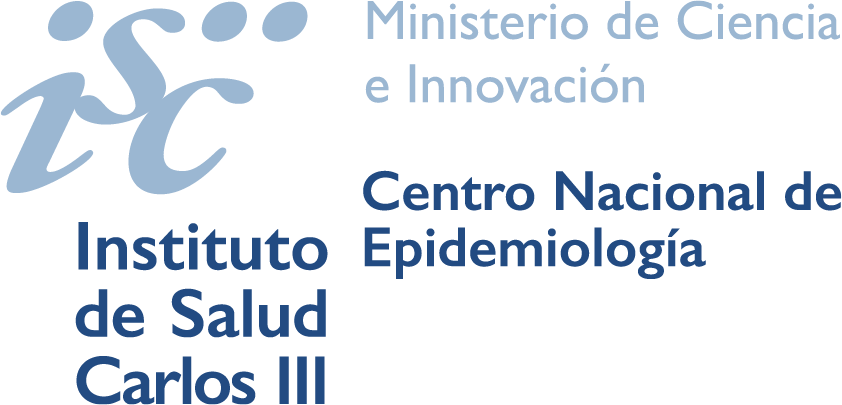Leishmaniasis in Spain. Years 2019, 2020 y 2021
DOI:
https://doi.org/10.4321/s2173-92772023000200002Keywords:
leishmaniasis, Spain, epidemiological surveillanceAbstract
Introduction: leishmaniasis is an endemic zoonotic disease in Spain, where is caused by Leishmania infantum and transmitted by Phlebothomus. It can clinically present in humans as cutaneous leishmaniasis (CL), mucocutaneous (MCL) or visceral (VL). The aim of the study was to know the epidemiologic situation on human leishmaniasis in Spain from 2019 to 2021.
Method: Epidemiologic descriptive analysis of human Leishmania cases notified to the Spanish Surveillance System from 2019 to 2021. Sociodemographic (age, sex, place of residence), clinical (category, hospitalization, dead, date of onset) and exposition (place) variables were analysed. Temporal trend from 2016 was also described and the information from both triennium (2019-2021 vs. 2016-2018) was compared.
Results: there were 1,074 notified cases, out of which 1,041 were autochthonous. The trend of incidence rate (IR) of autochthonous cases from 2016 to 2019 was stable, with a marked reduction in 2020. The higher IR corresponded to Valencian Region and Balearic Islands, both for 2019-2021 and 2016-2018. Among cases, 65,7% were men with higher rates for the whole period. The higher IR were in children under 1 year old and those from 1-4. The clinical category was LV in 48,6% of cases, with differences in distribution (%) between regions. The proportion of hospital admission was 49,6%, being higher for LV (92,2%) and the case fatality rate was 1,9%. There were 33 imported cases, 45,5% corresponded to children under 15 years old, from the Maghreb. The missing values proportion exceeded 20% in some variables.
Conclusions: the trend has been stable in the last years, with lower rates during pandemic years. Leishmaniasis is distributed throughout all the territory, with higher risk areas along the Mediterranean. The risk groups vary depending on age group and sex. There is room for improvement in the completion and availability of variables.
Downloads
References
Burza S, Croft SL, Boelaert M. Leishmaniasis. The Lancet. 15 de septiembre de 2018;392(10151):951-70.
Leishmaniasis [Internet]. [citado 6 de agosto de 2019]. Disponible en: https://www.who.int/news-room/fact-sheets/detail/leishmaniasis
Pigott DM, Bhatt S, Golding N, Duda KA, Battle KE, Brady OJ, et al. Global distribution maps of the leishmaniases. Tollman S, editor. eLife. 27 de junio de 2014;3:e02851.
Arce A, Estirado A, Ordobas M, Sevilla S, García N, Moratilla L, et al. Re-emergence of leishmaniasis in Spain: community outbreak in Madrid, Spain, 2009 to 2012. Euro Surveill Bull Eur Sur Mal Transm Eur Commun Dis Bull. 25 de julio de 2013;18(30):20546.
Aoun K, Kalboussi Y, Ben Sghaier I, Souissi O, Hammami H, Bellali H, et al. Assessment of Incubation Period of Cutaneous Leishmaniasis due to Leishmania major in Tunisia. Am J Trop Med Hyg. 4 de noviembre de 2020;103(5):1934-7.
Piscopo TV, Mallia Azzopardi C. Leishmaniasis. Postgrad Med J. 1 de febrero de 2007;83(976):649-57.
Centro Nacional de Epidemiología. Instituto de Salud Carlos III. Red Nacional de Vigilancia Epidemiológica. Protocolos de la Red Nacional de Vigilancia Epidemiológica. [Internet]. 2013. Disponible en: https://www.isciii.es/QueHacemos/Servicios/VigilanciaSaludPublicaRENAVE/EnfermedadesTransmisibles/Documents/PROTOCOLOS/PROTOCOLOS%20EN%20BLOQUE/PROTOCOLOS_RENAVE-ciber.pdf
Bruno F, Vitale F, La Russa F, Reale S, Späth GF, Oliveri E, et al. Retrospective Analysis of Leishmaniasis in Sicily (Italy) from 2013 to 2021: One-Health Impact and Future Control Strategies. Microorganisms. 24 de agosto de 2022;10(9):1704.
Alten B, Maia C, Afonso MO, Campino L, Jiménez M, González E, et al. Seasonal Dynamics of Phlebotomine Sand Fly Species Proven Vectors of Mediterranean Leishmaniasis Caused by Leishmania infantum. PLoS Negl Trop Dis [Internet]. 22 de febrero de 2016 [citado 9 de agosto de 2019];10(2). Disponible en: https://www.ncbi.nlm.nih.gov/pmc/articles/PMC4762948/
Gálvez R, Descalzo MA, Miró G, Jiménez MI, Martín O, Dos Santos-Brandao F, et al. Seasonal trends and spatial relations between environmental/meteorological factors and leishmaniosis sand fly vector abundances in Central Spain. Acta Trop. agosto de 2010;115(1-2):95-102.
Tzani M, Barrasa A, Vakali A, Georgakopoulou T, Mellou K, Pervanidou D. Surveillance data for human leishmaniasis indicate the need for a sustainable action plan for its management and control, Greece, 2004 to 2018. Eurosurveillance [Internet]. 6 de mayo de 2021 [citado 24 de mayo de 2023];26(18). Disponible en: https://www.eurosurveillance.org/content/10.2807/1560-7917.ES.2021.26.18.2000159
Humanes-Navarro AM, Herrador Z, Redondo L, Cruz I, Fernández-Martínez B. Estimating human leishmaniasis burden in Spain using the capture-recapture method, 2016–2017. Yurchenko V, editor. PLOS ONE. 29 de octubre de 2021;16(10):e0259225.
Herrador Z, Gherasim A, Jimenez BC, Granados M, San Martín JV, Aparicio P. Epidemiological Changes in Leishmaniasis in Spain According to Hospitalization-Based Records, 1997–2011: Raising Awareness towards Leishmaniasis in Non-HIV Patients. PLoS Negl Trop Dis [Internet]. 10 de marzo de 2015 [citado 9 de agosto de 2019];9(3). Disponible en: https://www.ncbi.nlm.nih.gov/pmc/articles/PMC4355586/
Downloads
Published
How to Cite
Issue
Section
License
Copyright (c) 2023 Beatriz Fernández Martínez

This work is licensed under a Creative Commons Attribution-NonCommercial-ShareAlike 4.0 International License.
El material creado por un autor puede ser distribuido, copiado y exhibido por terceros si se hace referencia a la autoría. No se puede obtener ningún beneficio comercial y las obras derivadas tienen que estar bajo los mismos términos de licencia que el trabajo original


